The WPA & the Alphabet Agencies
advertisement
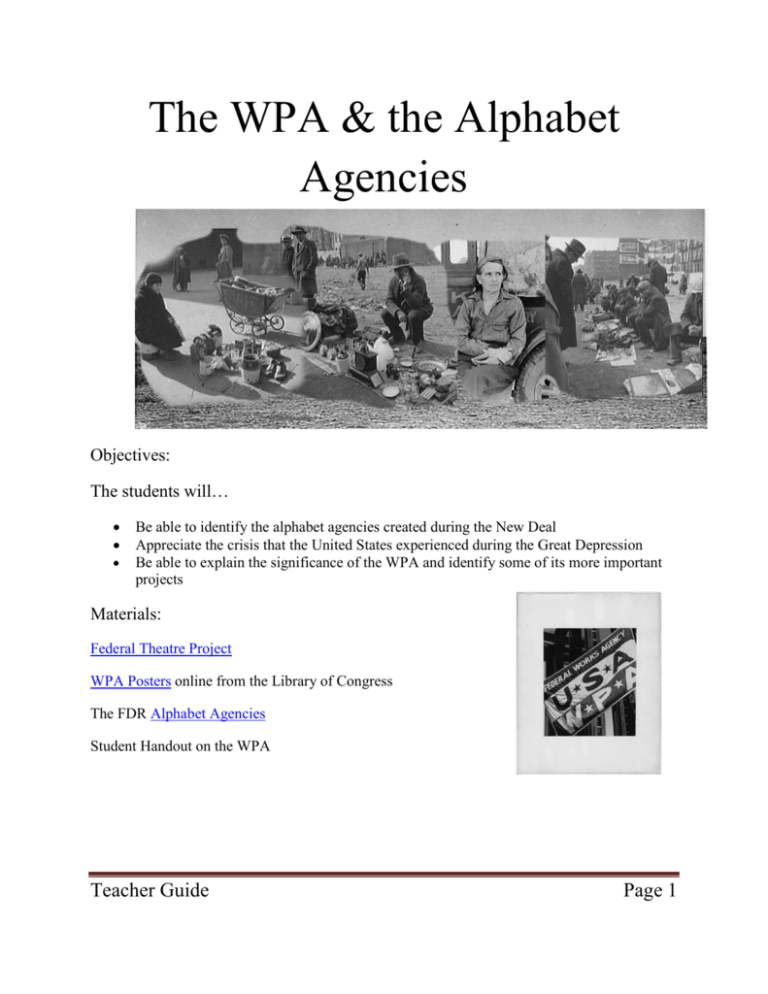
The WPA & the Alphabet Agencies Objectives: The students will… • • • Be able to identify the alphabet agencies created during the New Deal Appreciate the crisis that the United States experienced during the Great Depression Be able to explain the significance of the WPA and identify some of its more important projects Materials: Federal Theatre Project WPA Posters online from the Library of Congress The FDR Alphabet Agencies Student Handout on the WPA Teacher Guide Page 1 Optional: Hugh Gallagher: FDR’s Splendid Deception. This outstanding book chronicles Roosevelt’s polio and how he hid his disability from the American public. There are only two known photographs of Roosevelt in a wheel chair, neither were published in his lifetime. Additional Resources: The FDR Political Cartoon Collection. Photo 1: FDR at Warm Springs, Georgia The FDR Memorial in Washington, DC. Slave narratives from the Library of Congress. EarthStation1 has a DVD of Newsreel clips from the era, including FDR’s inaugural. Background: The Great Depression was one of the most serious crises that the nation had ever experienced. With over 25% of the American people unemployed, Franklin Roosevelt was inaugurated on March 4, 1933. In his inaugural address, he reassured the nation saying, “The only thing we have to fear is fear itself.” Click for an audio clip. The first 100 days of the Roosevelt administration was marked by an unprecedented flood of legislation and the president attempted to revive the economy. The alphabet agencies became representative of the New Deal with dozens of new agencies created. One of the most interesting is the Works Progress Administration (WPA). This agency had a wide range of objectives but one of its important goals was to employ individuals who were in vocations that were often unappreciated and underpaid, even in prosperous times. Thus, the WPA hired actors to perform theater, musicians to play concerts, historians to write histories, and so on. The WPA was responsible for some remarkable literary and artistic accomplishments. One of the most significant projects begun in the depression and carried on by workers from the WPA was an effort to record oral histories from former slaves. These recordings are now held at the Library of Congress and are a valuable audio resource into a past era. It is interesting to note to students that Franklin Roosevelt was confined to a wheel chair throughout his presidency, yet few people were aware of this fact. The press was complicit in hiding this information from the American public. This poses serious questions for students to consider about their “right to know” and it gives them the opportunity to contrast past sensibilities with the YouTube culture of today. It would also be interesting for the students to Teacher Guide Page 2 research the debate over the FDR Memorial in Washington, DC. Initially, there was no statue with Roosevelt in a wheel chair. The disabled community demanded that such a portrayal be added. Others argued that Roosevelt never wanted to be seen in a wheel chair and thus it should not be memorialized. It is a fascinating discussion and debate. 1. Provide the students with some background information about Franklin Roosevelt and the New Deal. • Explain the economic problems caused by the Stock Market crash of 1929. • Go over some of the alphabet agencies created during the new deal. 2. Explain to the students that the WPA was one of the most popular and important agencies during this period. • The posters in the handout come from the Library of Congress and represent some of the artistic endeavors from Americans who worked for the WPA. i. Poster one is a promotional advertisement for Pennsylvania. Historians wrote several tourist guide books for various cities as part of a WPA project. ii. Poster two is for a performance of The Trojan Incident, a play based upon Euripides’ Trojan Women. Actors were paid to perform. iii. Poster three is part of a series of posters for a workplace safety awareness campaign. • Historians, dancers, actors, artists, photographers, and writers sometimes have difficulty finding work even in prosperous times. The WPA was partially designed to help these people during the darkest days of the Depression. 3. Have the students take on an artistic project as if they were working for the WPA. • These are possible assignments—you can add others depending upon the makeup of your class (musical performance, dramatic reading, creative writing, etc.) • Each of the tasks is representative of the type of activity of the WPA. • Task 1: Design a poster i. This could be for your city or town to encourage tourism ii. It can be to increase awareness about a school issue or initiative (e.g. antismoking, recycling, etc.) • Task 2: Create a photo essay i. Take photographs around your school or community focusing on a specific theme (Look at old Life Magazines for examples of photo essays; your school yearbook is also an excellent resource). • Task 3: Conduct an oral history interview i. Interview an individual about an important historical event in their life. Record this digitally or on a cassette. Teacher Guide Page 3
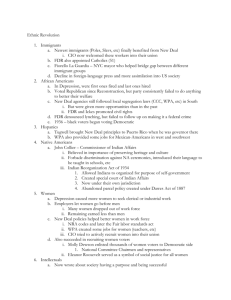

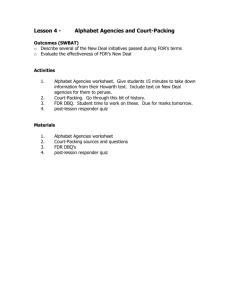
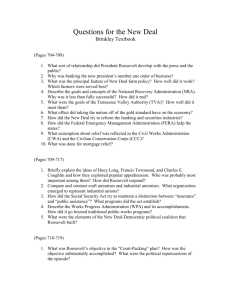
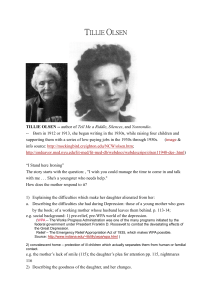
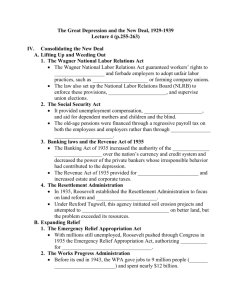
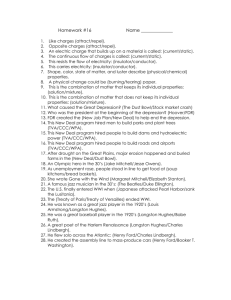
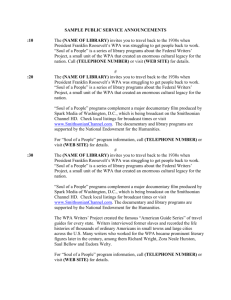

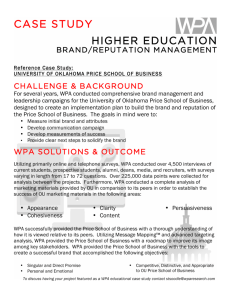

![[PROGRAM SCHEDULE] - Council of Writing Program Administrators](http://s3.studylib.net/store/data/009039576_1-3f1253dba33d3501d5af2f39842b8901-300x300.png)